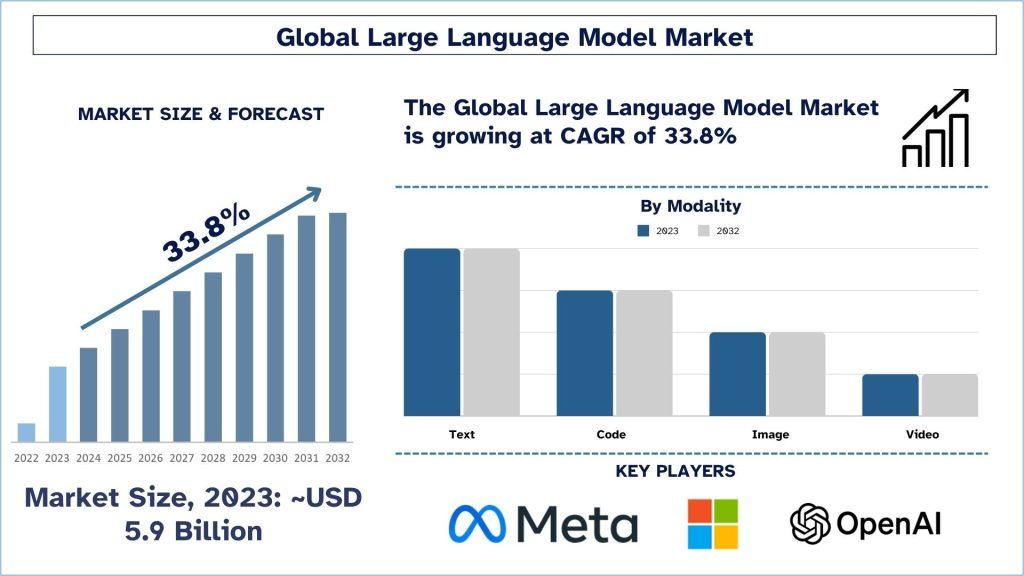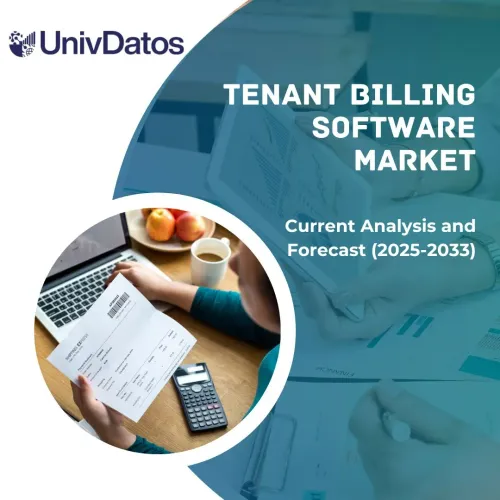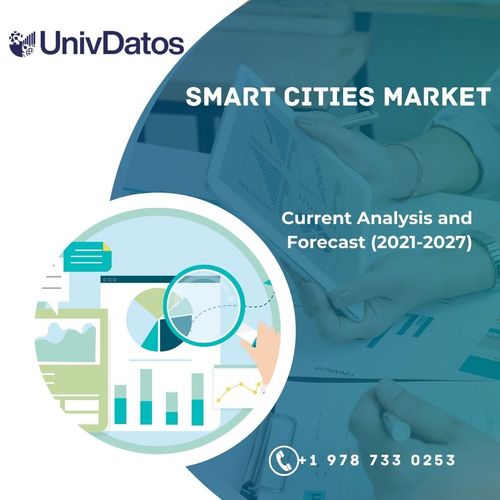- Inicio
- Acerca de nosotros
- Industria
- Servicios
- Leyendo
- Contáctenos
Mercado de Modelos de Lenguaje Extensos: Análisis Actual y Pronóstico (2024-2032)
Énfasis en el Tamaño del Modelo (Por debajo de 1.000 millones de Parámetros, de 1.000 millones a 10.000 millones de Parámetros, de 10.000 millones a 50.000 millones de Parámetros, de 50.000 millones a 100.000 millones de Parámetros, de 100.000 millones a 200.000 millones de Parámetros, de 200.000 millones a 500.000 millones de Parámetros, y Por encima de 500.000 millones de Parámetros); Aplicación (Servicio al Cliente, Generación de Contenido, Análisis de Sentimiento, Generación de Código, Traducción de Idiomas, y Otros); Modalidad (Texto, Código, Imagen, y Vídeo); Vertical de la Industria (BFSI, IT/ITeS, Retail y Manufactura, Medios y Entretenimiento, y Otros); y Región/País
Tamaño y Pronóstico del Mercado Global de Modelos de Lenguaje Extensos
El mercado global de Modelos de Lenguaje Extensos se valoró en USD 5.9 mil millones en 2023 y se espera que crezca a una fuerte CAGR de alrededor del 33.8% durante el período de pronóstico (2024-2032) debido a la creciente demanda de automatización impulsada por IA y experiencias de cliente mejoradas en todas las industrias.
Análisis del Mercado de Modelos de Lenguaje Extensos
El mercado de modelos de lenguaje extensos (MLE) es la industria global de Modelos de Lenguaje Extensos que se desarrollan, implementan o utilizan para procesar y generar texto en lenguaje natural. Actualmente, los MLE pre-entrenados como GPT y BERT se aplican a varias actividades de PNL, por ejemplo, creación de contenido, atención al cliente y traducción de idiomas. El mercado está creciendo a un ritmo acelerado debido a la creciente curiosidad por la IA en numerosos campos como la atención médica, la banca y las finanzas, y el sector empresarial electrónico. Los factores responsables del crecimiento son los algoritmos mejorados de aprendizaje profundo, la mayor accesibilidad de las infraestructuras de computación en la nube, el aumento de las inversiones en investigación de IA y la necesidad de soluciones para procesar la gran cantidad de datos. Esta expansión es impulsada además por el uso de sistemas de comunicación avanzados principalmente por empresas en un esfuerzo por mejorar la participación y las operaciones de los clientes.
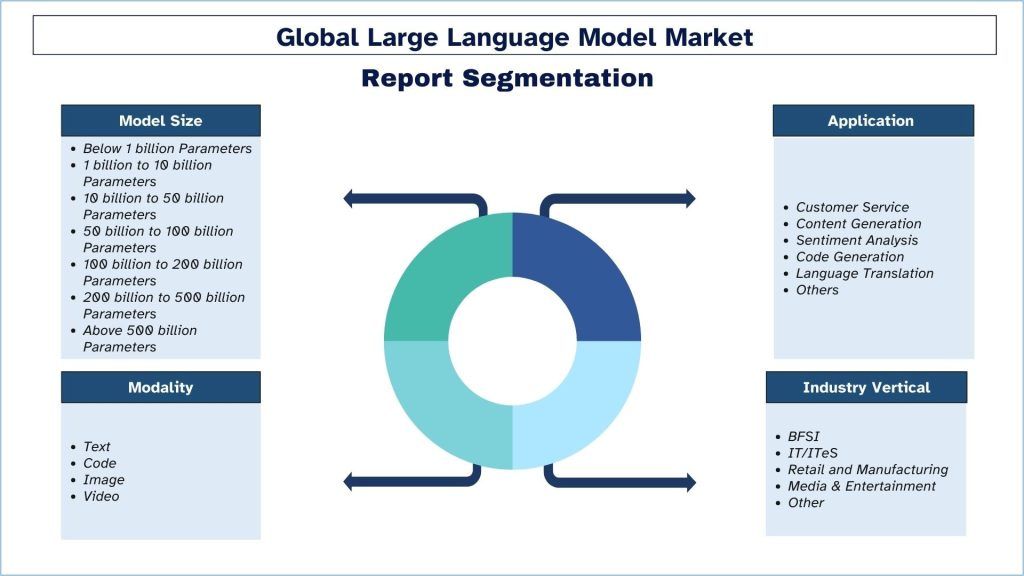
Tendencias del Mercado Global de Modelos de Lenguaje Extensos
Esta sección analiza las tendencias clave del mercado que están influyendo en los diversos segmentos del mercado global de Modelos de Lenguaje Extensos, según lo encontrado por nuestro equipo de expertos en investigación.
Segmento de Servicio al Cliente Transformando la Industria
La implementación a gran escala de la IA en chatbots y asistentes virtuales en la categoría de “Servicio al Cliente” está contribuyendo principalmente al crecimiento del mercado de Modelos de Lenguaje Extensos dentro del sector global. Estos MLE resuelven preguntas y problemas de los clientes, solucionan problemas y ofrecen ayuda inmediata en diferentes formatos de medios. Las empresas proveedoras de productos químicos pueden agilizar las actividades requeridas, mejorar la precisión de la respuesta, minimizar los costos y estar disponibles las 24 horas del día, los 7 días de la semana, logrando así una mayor retención y lealtad de los clientes. Por lo tanto, la demanda de MLE especializados en este campo seguirá siendo alta a medida que más organizaciones comprendan el potencial de la IA para mejorar el servicio al cliente.
Se espera que APAC crezca a un ritmo significativo durante el período de pronóstico
El mercado de Modelos de Lenguaje Extensos (MLE) de Asia-Pacífico está creciendo a un ritmo asombroso, principalmente debido al creciente uso de la inteligencia artificial en diferentes sectores de la industria, incluidos los sectores de comercio electrónico, finanzas, atención médica y educación. China, India y Japón, por ejemplo, están destinando grandes proporciones de sus recursos a la investigación y el desarrollo de IA, hardware y software, y como pioneros y participantes en el mercado de MLE. En cuanto a las crecientes tendencias, los idiomas y dialectos regionales específicos, los MLE se han puesto a disposición en modelos multilingües que están ayudando en la adopción y el estímulo del gobierno hacia las formulaciones de IA. El crecimiento del sector tecnológico en la región, la economía digital en continuo crecimiento, la necesidad de automatización y la participación del cliente en las empresas son los impulsores del crecimiento del mercado.
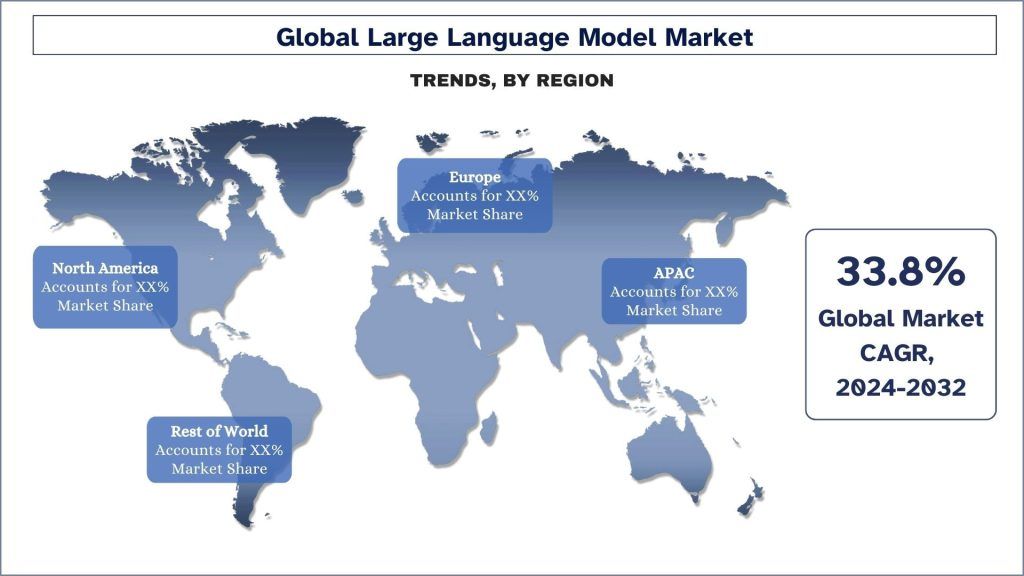
Descripción General de la Industria Global de Modelos de Lenguaje Extensos
El mercado global de Modelos de Lenguaje Extensos es competitivo, con varios actores del mercado global e internacional. Los actores clave están adoptando diferentes estrategias de crecimiento para mejorar su presencia en el mercado, como asociaciones, acuerdos, colaboraciones, lanzamientos de nuevos productos, expansiones geográficas y fusiones y adquisiciones. Algunos de los principales actores del mercado son NVIDIA Corporation; Alibaba Group Holding Limited; Amazon.com, Inc.; Baidu Research; Google LLC; Meta; Microsoft; OpenAI; Tencent; y YANDEX LLC
Cobertura del Informe del Mercado Global de Modelos de Lenguaje Extensos
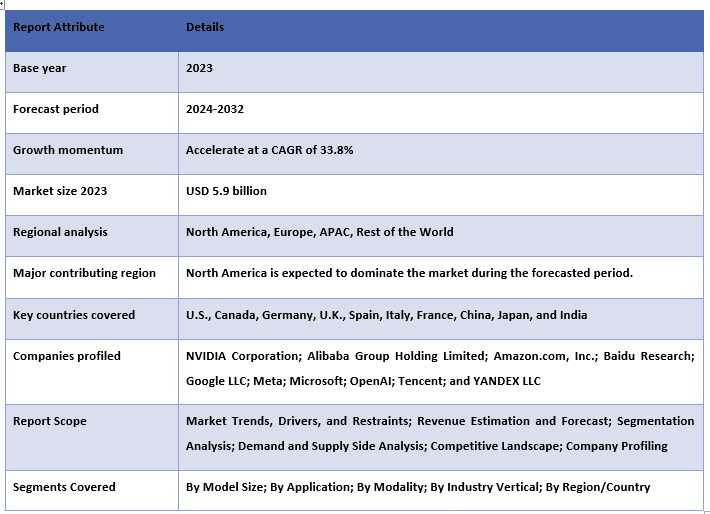
Razones para comprar este informe:
- El estudio incluye el dimensionamiento del mercado y el análisis de pronóstico confirmado por expertos clave de la industria autenticados.
- El informe revisa brevemente el rendimiento general de la industria de un vistazo.
- El informe cubre un análisis en profundidad de pares de la industria prominentes, centrándose principalmente en las finanzas comerciales clave, las carteras de tipos, las estrategias de expansión y los desarrollos recientes.
- Examen detallado de los impulsores, restricciones, tendencias clave y oportunidades que prevalecen en la industria.
- El estudio cubre de manera integral el mercado en diferentes segmentos.
- Análisis a nivel regional de la industria en profundidad.
Opciones de Personalización:
El mercado global de modelos de lenguaje extensos se puede personalizar aún más según los requisitos o cualquier otro segmento del mercado. Además de esto, UMI entiende que puede tener sus propias necesidades comerciales, por lo tanto, no dude en contactarnos para obtener un informe que se adapte completamente a sus necesidades.
Tabla de contenido
Metodología de Investigación para el Análisis del Mercado Global de Modelos de Lenguaje Extensos (2024-2032)
El análisis del mercado histórico, la estimación del mercado actual y el pronóstico del mercado futuro del mercado global de Modelos de Lenguaje Extensos fueron los tres pasos principales realizados para crear y analizar la adopción del Modelos de Lenguaje Extensos global en las principales regiones. Se realizó una exhaustiva investigación secundaria para recopilar las cifras históricas del mercado y estimar el tamaño actual del mercado. En segundo lugar, para confirmar estas ideas, se consideraron numerosos hallazgos y supuestos. Además, se realizaron exhaustivas entrevistas primarias con expertos de la industria en toda la cadena de valor del mercado global de Modelos de Lenguaje Extensos. Para la suposición y validación de los números del mercado a través de entrevistas primarias, empleamos un enfoque de arriba hacia abajo/abajo hacia arriba para pronosticar el tamaño completo del mercado. Posteriormente, se adoptaron métodos de desglose del mercado y triangulación de datos para estimar y analizar el tamaño del mercado de segmentos y subsegmentos de la industria. El método detallado se explica a continuación:
Análisis del Tamaño Histórico del Mercado
Paso 1: Estudio en Profundidad de Fuentes Secundarias:
Se realizó un estudio secundario detallado para obtener el tamaño histórico del mercado del mercado global de Modelos de Lenguaje Extensos a través de fuentes internas de la empresa, como informes anuales y estados financieros, presentaciones de rendimiento, comunicados de prensa, etc., y fuentes externas que incluyen revistas, noticias y artículos, publicaciones gubernamentales, publicaciones de la competencia, informes sectoriales, bases de datos de terceros y otras publicaciones creíbles.
Paso 2: Segmentación del Mercado:
Después de obtener el tamaño histórico del mercado del mercado global de Modelos de Lenguaje Extensos, realizamos un análisis secundario detallado para recopilar información histórica del mercado y compartirla para diferentes segmentos y subsegmentos para las principales regiones. Los principales segmentos incluidos en el informe son, por ejemplo, tamaño del modelo, aplicación, modalidad, vertical de la industria y región. Además, se realizaron análisis a nivel de país para evaluar la adopción general de los modelos de prueba en esa región.
Paso 3: Análisis de Factores:
Después de comprar el tamaño histórico del mercado de diferentes segmentos y subsegmentos, realizamos un análisis de factores detallado para estimar el tamaño actual del mercado del mercado global de Modelos de Lenguaje Extensos. Además, realizamos un análisis de factores utilizando variables dependientes e independientes como el tamaño del modelo, la aplicación, la modalidad, la vertical de la industria y las regiones del mercado global de Modelos de Lenguaje Extensos. Se realizó un análisis exhaustivo de los escenarios de la oferta y la demanda considerando las principales asociaciones, fusiones y adquisiciones, la expansión comercial y los lanzamientos de productos en el mercado global de Modelos de Lenguaje Extensos.
Estimación y Pronóstico del Tamaño del Mercado Actual
Dimensionamiento del Mercado Actual: Basado en información práctica de los 3 pasos anteriores, llegamos al tamaño actual del mercado, a los actores clave en el mercado global de Modelos de Lenguaje Extensos y a las cuotas de mercado de los segmentos. Todas las divisiones de cuotas porcentuales requeridas y los desglose del mercado se decidieron utilizando el enfoque secundario mencionado anteriormente y se verificaron a través de entrevistas primarias.
Estimación y Pronóstico: Para la estimación y el pronóstico del mercado, se asignaron ponderaciones a varios factores, incluidos los impulsores y las tendencias, las restricciones y las oportunidades disponibles para las partes interesadas. Después de analizar estos factores, se aplicaron técnicas de pronóstico relevantes, es decir, el enfoque de arriba hacia abajo/abajo hacia arriba, para llegar al pronóstico del mercado 2032 para diferentes segmentos y subsegmentos en los principales mercados a nivel mundial. El método de investigación adoptado para estimar el tamaño del mercado abarca:
El tamaño del mercado de la industria, en términos de ingresos (USD) y la tasa de adopción del mercado global de Modelos de Lenguaje Extensos en los principales mercados a nivel nacional
Todas las cuotas porcentuales, divisiones y desgloses de segmentos y subsegmentos del mercado
Actores clave en el mercado global de Modelos de Lenguaje Extensos en términos de tipos ofrecidos. Además, las estrategias de crecimiento adoptadas por estos actores para competir en el mercado de rápido crecimiento.
Validación del Tamaño y la Cuota de Mercado
Investigación Primaria: Se realizaron entrevistas en profundidad con los Líderes de Opinión Clave (KOL) incluyendo Ejecutivos de Alto Nivel (CXO/VPs, Jefe de Ventas, Jefe de Marketing, Jefe de Operaciones, Jefe Regional, Jefe de País, etc.) en las principales regiones. Los hallazgos de la investigación primaria se resumieron y se realizó un análisis estadístico para demostrar la hipótesis establecida. Los aportes de la investigación primaria se combinaron con los hallazgos secundarios, convirtiendo así la información en información útil.
División de los Participantes Primarios en Diferentes Regiones
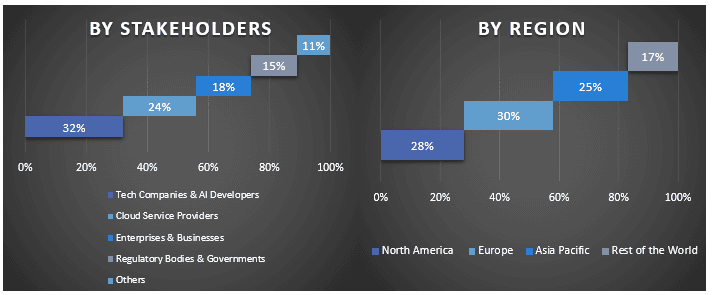
Ingeniería de Mercado
La técnica de triangulación de datos se empleó para completar la estimación general del mercado y llegar a números estadísticos precisos para cada segmento y subsegmento del mercado global de Modelos de Lenguaje Extensos. Los datos se dividieron en varios segmentos y subsegmentos después de estudiar varios parámetros y tendencias en el tamaño del modelo, la aplicación, la modalidad, la vertical de la industria y las regiones del mercado global de Modelos de Lenguaje Extensos.
El Objetivo Principal del Estudio del Mercado Global de Modelos de Lenguaje Extensos
Las tendencias actuales y futuras del mercado global de Modelos de Lenguaje Extensos se identificaron en el estudio. Los inversores pueden obtener información estratégica para basar su discreción para las inversiones en el análisis cualitativo y cuantitativo realizado en el estudio. Las tendencias actuales y futuras del mercado determinaron el atractivo general del mercado a nivel regional, proporcionando una plataforma para que el participante industrial explote el mercado sin explotar para recibir ayuda de una ventaja de primer movimiento. Otros objetivos cuantitativos de los estudios incluyen:
- Analizar el pronóstico actual y el tamaño del mercado global de Modelos de Lenguaje Grandes en términos de valor (USD). Además, analizar el pronóstico actual y el tamaño del mercado de diferentes segmentos y subsegmentos.
- Los segmentos en el estudio incluyen áreas de tamaño del modelo, aplicación, modalidad, sector vertical de la industria y regiones.
- Definir y analizar el marco regulatorio para la industria.
- Analizar la cadena de valor involucrada con la presencia de varios intermediarios, junto con el análisis de los comportamientos de clientes y competidores de la industria.
- Analizar el tamaño actual y previsto del mercado global de Modelos de Lenguaje Grandes para las principales regiones.
- Los principales países de las regiones estudiadas en el informe incluyen Asia Pacífico, Europa, América del Norte y el Resto del Mundo
- Perfiles de empresas del mercado global de Modelos de Lenguaje Grandes y las estrategias de crecimiento que los actores adoptan para sostener el mercado de rápido crecimiento.
- Análisis en profundidad a nivel regional de la industria
Preguntas frecuentes Preguntas frecuentes
P1: ¿Cuál es el tamaño actual del mercado global de Modelos Lingüísticos Grandes y su potencial de crecimiento?
P2: ¿Cuáles son los factores impulsores del crecimiento del mercado global de Modelos Lingüísticos Grandes?
P3: ¿Qué segmento tiene la mayor cuota de mercado global de modelos lingüísticos grandes por categoría de tamaño de modelo?
P4: ¿Cuáles son las tecnologías y tendencias emergentes en el mercado global de Modelos Lingüísticos Grandes?
P5: ¿Qué regiones dominan el mercado global de Modelos Lingüísticos Grandes?
Relacionados Informes
Los clientes que compraron este artículo también compraron

